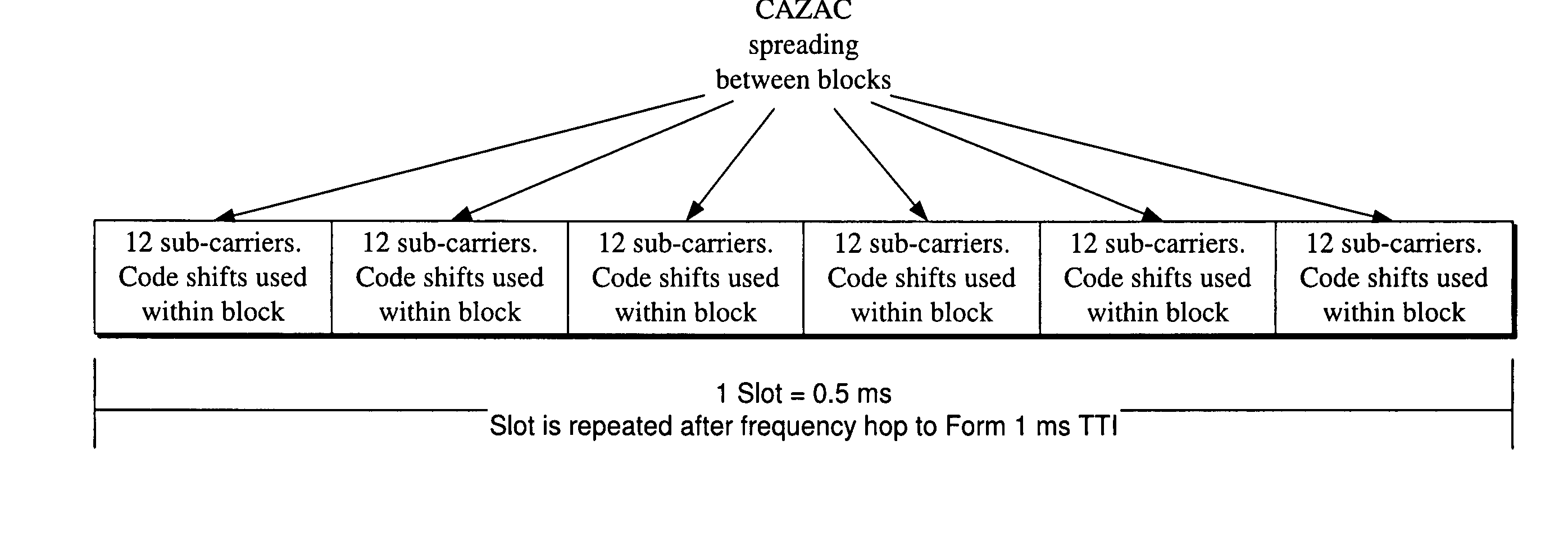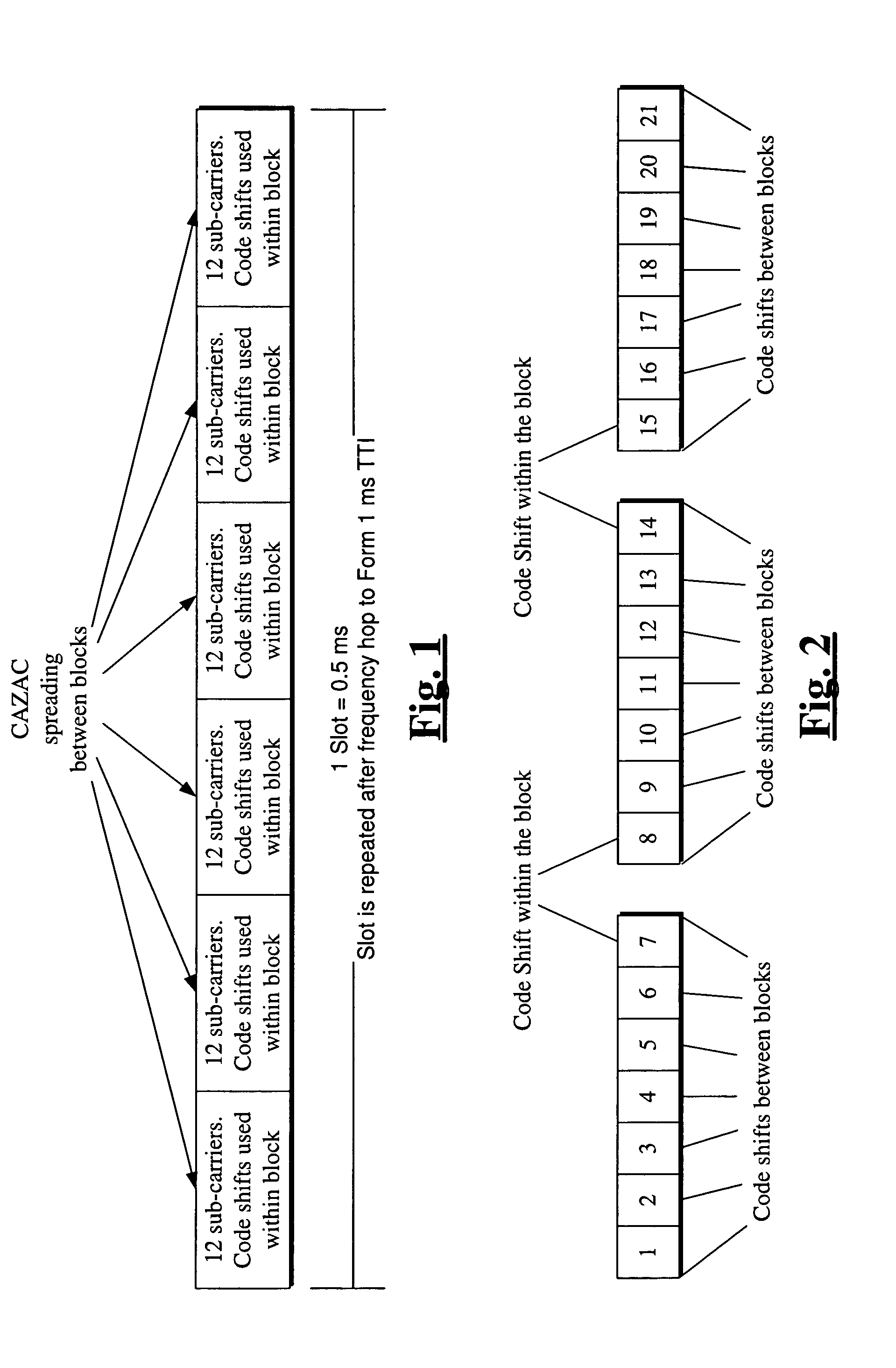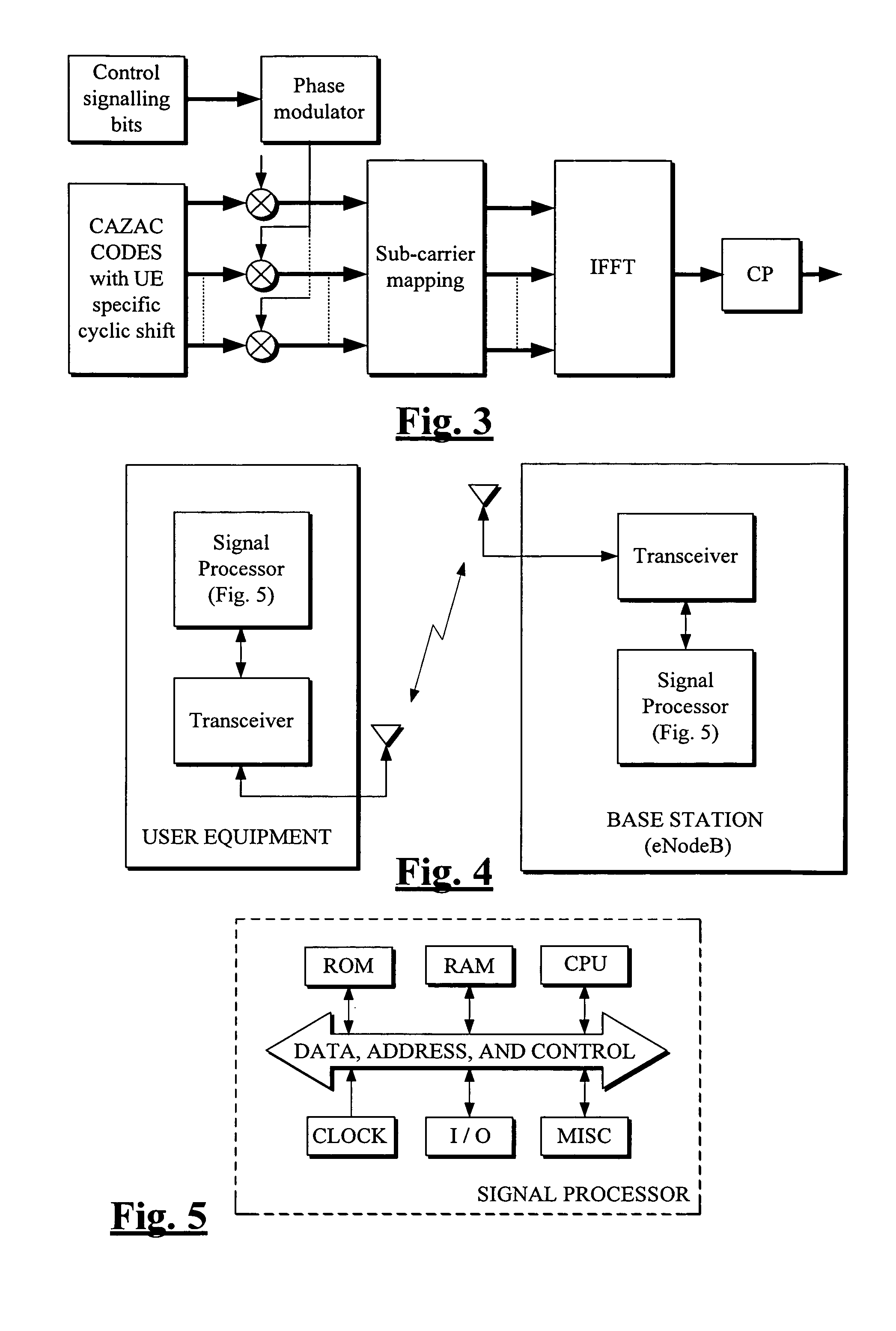Robust scheduling request mechanism in a cellular environment
- Summary
- Abstract
- Description
- Claims
- Application Information
AI Technical Summary
Benefits of technology
Problems solved by technology
Method used
Image
Examples
Embodiment Construction
[0036]The transmitter in FIG. 3 will transmit, for each complex valued symbol within each SC-FDMA symbol, the result of a product of two elements of two different CAZAC sequences. These two CAZAC sequences are formed as cyclic shifts of CAZAC root sequences. The length of the first CAZAC sequence (sequence 1) is 12 and the length of the other sequence (sequence 2) is 7, in the LTE example. First the 12 elements of the CAZAC sequence 1 are formed. These elements are formed using a cyclic shift of a certain root sequence. 12 cyclic shifts are possible for this sequence. It is noted that in practice less than 12 can typically be used. Values of 6 and 3 are used in the examples described below. Root sequences 1,5,7 and 11 are possible (values of u previously described). The same values of sequence 1 are used for each SC-FDMA symbol in a slot for a single transmitter. Different transmitters within the same cell may use a different cyclic shift of the same root sequence. A different root ...
PUM
 Login to view more
Login to view more Abstract
Description
Claims
Application Information
 Login to view more
Login to view more - R&D Engineer
- R&D Manager
- IP Professional
- Industry Leading Data Capabilities
- Powerful AI technology
- Patent DNA Extraction
Browse by: Latest US Patents, China's latest patents, Technical Efficacy Thesaurus, Application Domain, Technology Topic.
© 2024 PatSnap. All rights reserved.Legal|Privacy policy|Modern Slavery Act Transparency Statement|Sitemap



